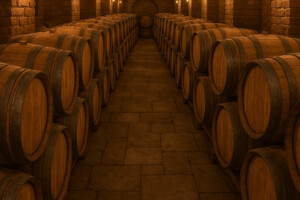
Italian wineries are aware that they need to invest more especially in the vineyard, to cope with climate change, in human resources, which are essential to keep the business running, and in digitalization, to keep up with the changing world. But when we talk about wine companies, we are talking about very different realities, in terms of size, business model, territory and many other variables. And on closer inspection, looking at the fundamental parameter of profitability, it emerges that it is those that are private and more capitalized in terms of vineyards and real estate that are better in this respect. It emerges from “Vino Vip Cortina 2022”, a biennial event of analysis and reflection on the world of wine organized by the historic magazine Civiltà del Bere, from the analysis of the deposited balance sheets of 373 companies, 187 private and 186 cooperatives, signed by Luca Castagnetti (Studio Impresa), who plumbed the numbers of Italian wineries with turnover over 3 million euros, with homogeneous data from 2018 to 2021.
“We set the median capitalization line from a figure of 29.9%, categorizing as “light” the companies below this parameter, and in “strong” those above”, Castagnetti explains, “and it turned out that 190 companies in the sample are the “light” ones, and 183 are the “strong” ones, and this influences the results”. Overall, the panel saw growths of more than 10% in turnover in both 2020 and 2021, with average ebitda coming in at 12.17% for individuals, holding steady at around 5% for cooperatives, with the industry average at 8.7%. “Numbers that are enviable for so many other made-in-Italy sectors”, Castagnetti pointed out. But unbundling the data, it emerges that the private and most capitalized, i.e., “strong” companies are clearly those with the highest ebitda, i.e., profitability, with 15.7% on average, and growth of +27% over 2020, and +19% over 2019. A clear signal, which becomes even more evident when looking at the small sample of the “50 top performers”, Castagnetti explains. “Here we reach a maximum profitability of 59%, with an average of 31.8%, in a sample that is 74% made up of private “Strong” companies. And territorial differences emerge, because if 26% of these companies are in Tuscany and 20% are in Veneto, for example, revenues per employee in Veneto are 861,000 euros, in Tuscany 259,000. And this means that there are profoundly different business models, but equally successful”.
And then, there is the Bolgheri case: “here in fact”, Castagnetti explains, “there are only private and capitalized companies, with a profitability between 39% and 40%, which is a very high territorial figure”.
The analysis, however, also revealed the need for companies to be more prepared (55% said they were taken aback by the rising cost of raw materials, for example), and the need to invest especially in the vineyard to counter climate change, and in human resources, to grow companies that require more and more skills, as also witnessed by the speeches of Andrea Stolfa CEO Della Toffola Group, which brings together many Italian technology companies ranging from the vineyard to the bottle, with a turnover of 210 million euros, 80% of which is exported, and Roberto Bianchi, director Foragri, a fund for agriculture and agribusiness focused on business training, on stage with, among others, Gianni Bruno, head of Vinitaly. And with Eugenio Sartori, at the head of Vivai Cooperativi Rauscedo, who made the focus on the “stock market” and trends of what is happening in the Italian vineyard, seen from the front of the Italian vineyard nursery, which produces between 130 and 140 million shoots each year, 80 million of which come from Vivai Cooperativi Rauscedo itself. “Determining the choices of companies are factors such as the market, of course, but also the choices of denominations and the climate. So, for example, if in 2016/2017 at the top were Glera, or Prosecco, and Pinot Grigio, above all, today the most popular, in order, are Primitivo, Sangiovese, Glera, Pinot Grigio, Merlot, Chardonnay, Barbera, Vermentino, Trebbiano Toscano and Montepulciano”. A top 10 that is worth 54% of the Italian shoot market. But other trends are also emerging, Sartori explains: “producers are looking for more productive varieties and clones, more able to resist disease and climate change, and with broad flavor profiles. But work is also being done on resistant varieties, cultivated today in 1,200 hectares in Italy, compared to 5,000 in France, because bureaucracy holds back. In France there is a national project to have resistant varieties in every district. In Italy, approvals come region by region, and some are still completely stopped”.
Copyright © 2000/2025
Contatti: info@winenews.it
Seguici anche su Twitter: @WineNewsIt
Seguici anche su Facebook: @winenewsit
Questo articolo è tratto dall'archivio di WineNews - Tutti i diritti riservati - Copyright © 2000/2025